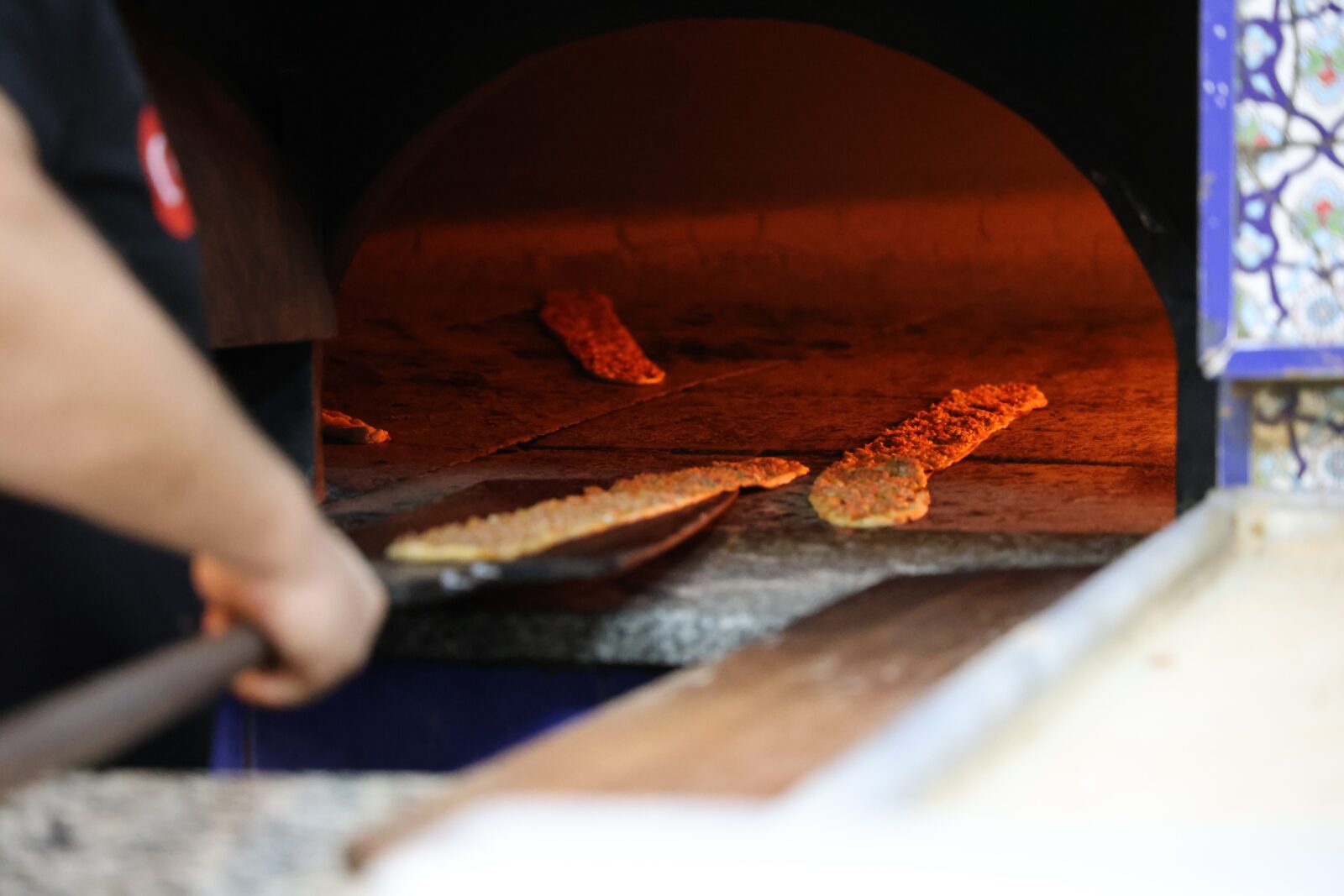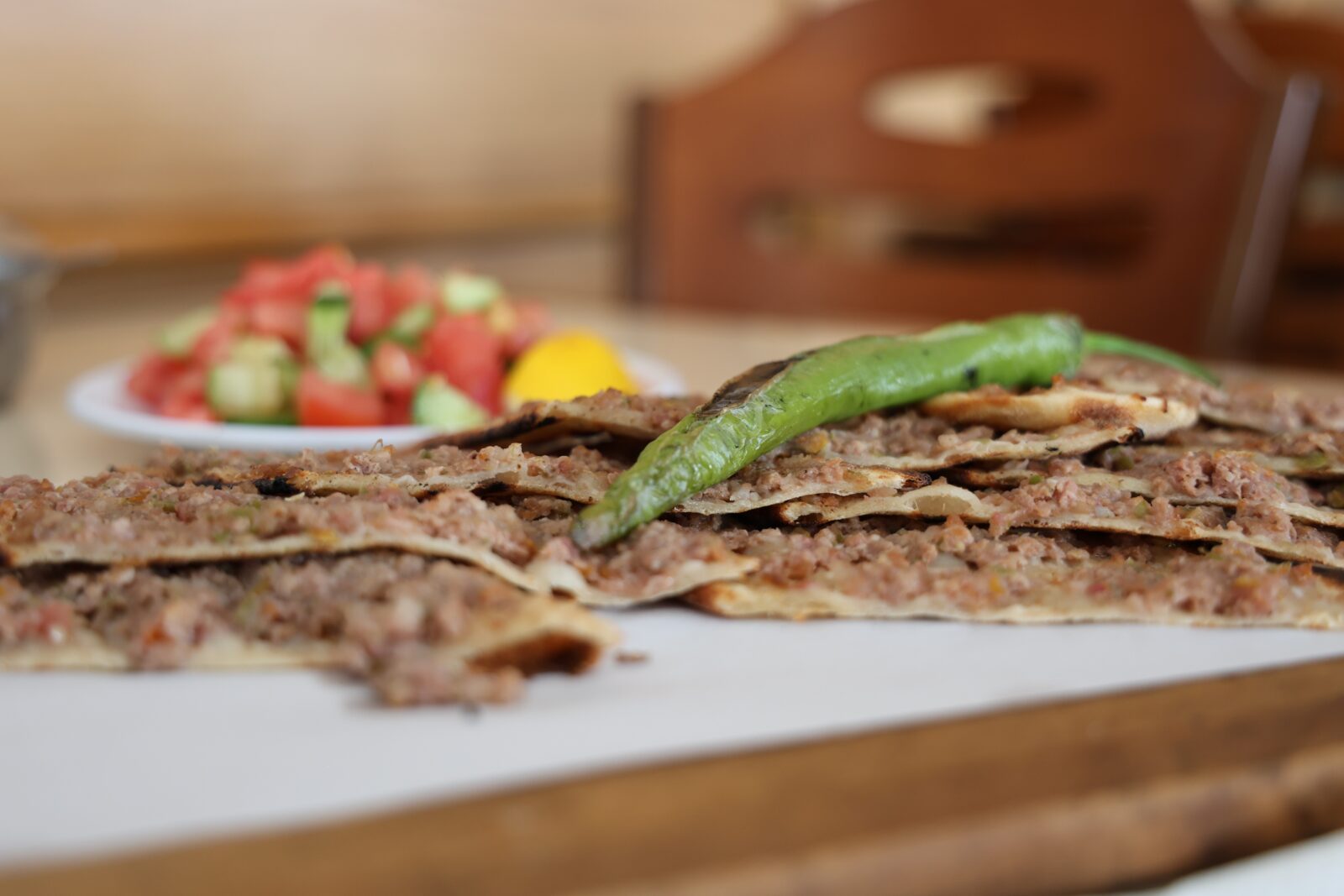Discover Turkish cuisine’s 800-year-old gem, Konya’s ‘etliekmek’
 Locals and tourists enjoy traditional disg Etliekmek in Konya, Türkiye, July 26, 2024. (IHA Photo)
Locals and tourists enjoy traditional disg Etliekmek in Konya, Türkiye, July 26, 2024. (IHA Photo)
“Etliekmek” is a traditional Turkish flatbread with a history dating back to the 13th century and continues to be a beloved dish in Konya.
This meat-infused delicacy, comprising minced meat, tomatoes, peppers, and onions, was first served to guests at the Raziye Hatun Han in Kadinhani during the Anatolian Seljuk era.
For centuries, etliekmek has remained a staple in Turkish cuisine, particularly in Konya, where it holds a special place. Mustafa Ortaabaci, a 50-year veteran etliekmek master, emphasized its historical significance. “The recipe dates back to the 1200s, originating in Kadinhani before becoming popular in Konya’s city center,” Ortaabaci said.

Etliekmek’s culinary heritage, traditional way of making
Traditionally, etliekmek was made using a 220-gram dough, topped with 100 grams of meat and 50 grams of vegetables, and baked in wood-fired ovens. This method has evolved, but the essence of the dish remains unchanged. Today, the preparation involves mixing the dough with lukewarm or cold water, depending on the weather, and baking it in wood-fired ovens for enhanced flavor.
Despite its long-standing tradition, etliekmek has faced changes. The dish, once available only in the afternoons, began being served in the evenings post-1980s, and by the 1990s, its shape became longer and thinner. Ortaabaci noted, “The older generation prefers the traditional thicker crust, while the new generation likes it crispy.”
Kenan Kara, a long-time fan, prefers the traditional version. “We want it like it used to be. When the dough is thicker, the meat cooks better,” he said. Similarly, Muzaffer Usta fondly recalls the past. “Etliekmek should be about one meter long and 20 centimeters wide. Now, people eat it like chips. It should be filling, not just a snack,” he lamented.

Greece, Türkiye bump heads over yet another dish, etliekmek
Beyond Türkiye, etliekmek has sparked a cultural debate with Greece, where it has started appearing in Greek eateries. This claim has led to protests from Turkish regions like Konya, Kastamonu, and Sivas.
Beyond Türkiye, etliekmek has started appearing in Greek eateries, sparking debates. This claim has led to protests from Turkish regions like Konya, Kastamonu and Sivas. Sivas even secured a geographical indication for its etliekmek in 2020, reinforcing its Turkish origins. Ali Kara, a chef from Sivas, has invited Greeks to Türkiye to taste the authentic etliekmek, emphasizing its deep cultural roots.
This culinary contention underscores the broader debate over the origins of shared dishes between Türkiye and Greece, such as baklava and dolma. These disputes reflect the complex relationship between the two nations, intertwined by shared history and cultural exchanges.
In the realm of gastronomic tourism, such debates are significant. According to the World Tourism Organization, 88.2% of tourists consider food an essential part of their travel experience. Thus, the authenticity of dishes like etliekmek is not just a matter of cultural pride but also an element of tourism competitiveness.



